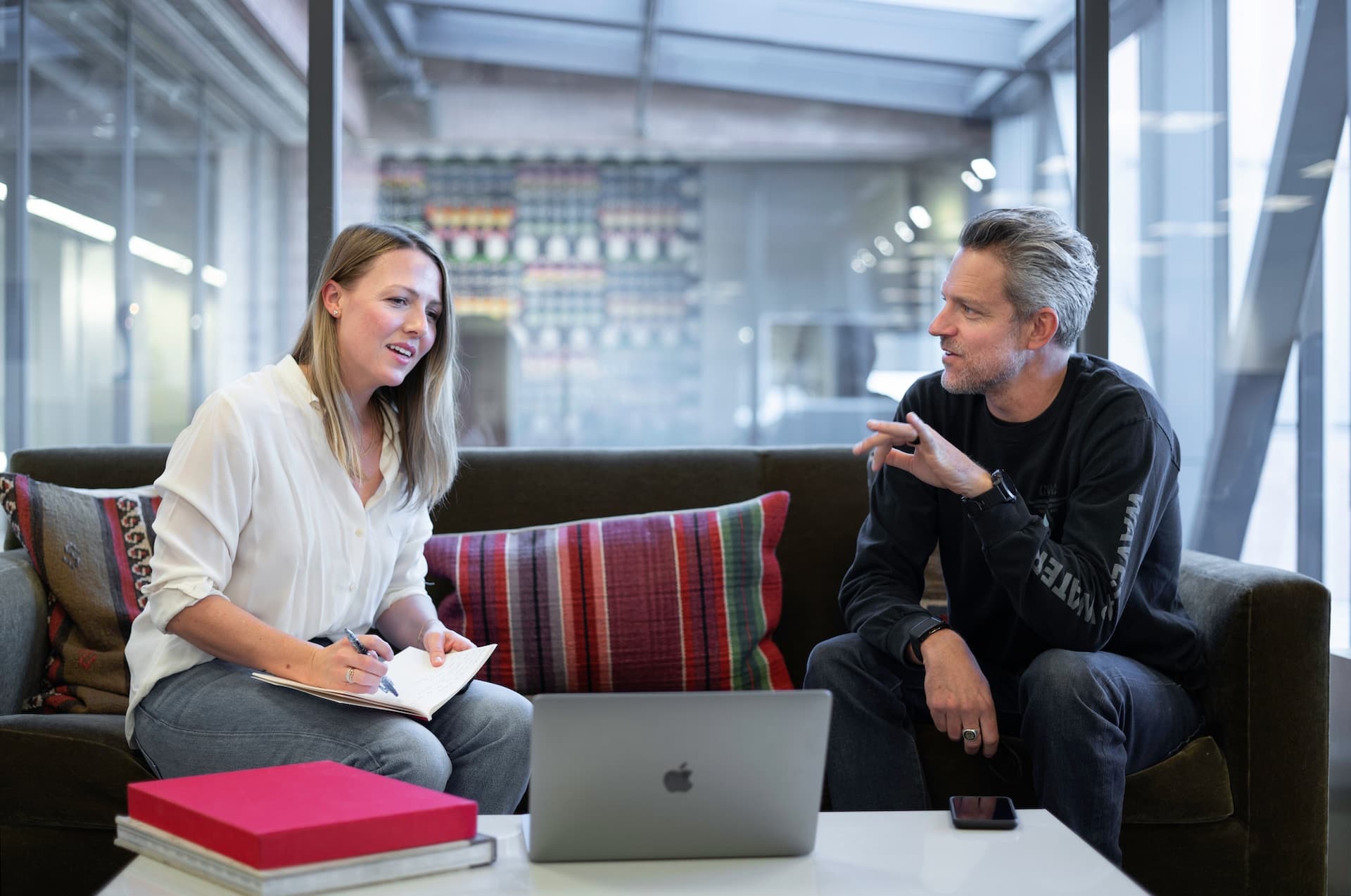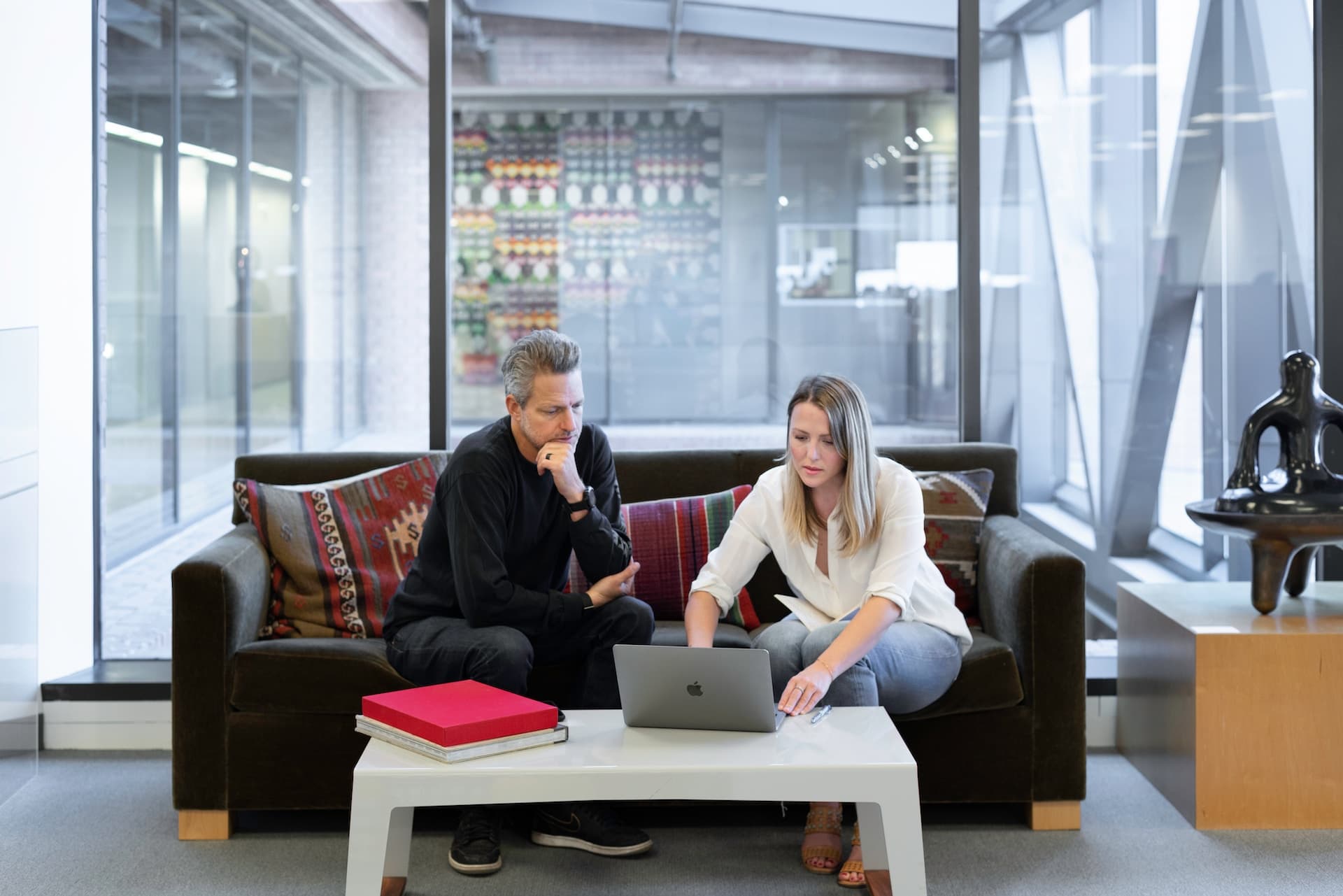21 marketing channels for membership sites: Face-to-face

This post is part of a series, based on the ebook 'Top 21 marketing channels for membership sites', written by The Subscription Coach Amanda Northcutt.
Download the entire series as an ebook >
Table of contents: 21 marketing channels for membership sites
- Introduction
- Content
- Social
- Audio
- Face-to-face (this page)
- Sales and advertising
- Thought leadership
- Wrap up
Creative marketing opportunities abound at trade shows and industry conferences: pay for a booth, buy a sponsorship through the organizer, host a spin-off event in conjunction with the show/conference, and more.
If you are lucky enough that someone else in your industry is organizing an annual conference where your target audience comes together, you need to be there.
Relative to hosting your own event, attending a conference that someone else is putting on is like hitting the easy button. BUT, if you just show up, sans strategy, you might as well stay home.
There are often conference/event/trade show sponsorships available for purchase, booths, and other opportunities to get amplified exposure to attendees over what you can accomplish on a one-to-one basis. The Holy Grail of event engagement at someone else's event is to be a speaker. I'll address speaking engagements a bit later, but as uncomfortable as it might be at first, public speaking in front of your target audience is as good as gold. It's a fast path to trust and authority, provided your speech is engaging, valuable, and relatable.
Assess sponsorship opportunities in the same way you would with any paid advertising. It should be measurable, and that's largely on you with an event sponsorship. Your presence at the event, brand experience you create, and call to action will likely determine your success or lack thereof. Your event strategy needs to include pre-event prep, an on-site plan, and a follow up sequence. This goes for whether or not you have a paid sponsorship, though it will likely be significantly easier if you have one.
Prep: If you can get access and exposure to the list of attendees before the event you can move them through the sales pipeline faster. If you're a sponsor, ask the organizers how to fully leverage the sponsorship. Ask for more than what is included in the sponsorship package if you can think of a creative way to provide value to attendees and make the organizer look good.

If you don't have a sponsorship and you're not an influencer in your space, you're unlikely to get the attention of the organizers in any kind of meaningful way. Circumvent this by getting on Twitter and Instagram and use the corresponding event hashtag to try and find others who are coming. Get to know these folks and consider hosting a happy hour, meal, or off site mini-workshop in the days and hours surrounding the main event.
The day of: Sponsor or not, figure out a way to capture leads. You can definitely do this on a one-to-one basis by providing a relevant resource or offer to an interested prospect in exchange for contact information or permission to connect with them on social media. Read the room and don't be pushy or salesy. If you can help someone, tell them you think you can and ask for permission to email them. Taking a second to write a quick note about each person so you can send a contextual follow-up is going to set you head and shoulders above those with generic follow-up emails completely lacking personal details.
Track the event hashtag on social media during and after the event, and use it yourself. That's a free way to amplify your presence and make you more visible to attendees. This is also a great way to track down prospects and influencers during and after the event.
If you do have a booth at a conference, you need a way to stand out. I'm no expert here, but get on Pinterest and look for some creative inspiration. Get noticed and if your industry lends itself to a little lighthearted fun, then play that up. One way to do this is to have a themed booth and have employees or helpers dress a certain way.
One thing I've seen done successfully is to have employees walking around and asking people if they'd like to be invited to an exclusive club/restaurant for cocktails after the event. They then have to go to your booth to hear more about your offering and sign up (lead capture) to get an invite. If you do this, you need to have a fun bunch running your booth – people that your prospects actually want to spend time having drinks with. Rent out a popular bar or room in a restaurant in town and pay the tab at the end of the night. Something like this creates a little buzz (no pun intended) at the event, allows prospects to have a positive experience with your brand, and essentially serves as an in-person lead magnet.
Follow up: All your prep and on-site work will go to waste if you drop the ball on the follow-up strategy. Remember, lead capture during the event is key, otherwise you won't have many people to follow up with. Oops.
The day after the event, write an individual email including the personal details you made note of when you met them (you did that, right?) and make a connection with them on their favorite social media outlet for the one-two punch. Don't wait around on this. You need to capitalize on event hype and momentum and if you put this off for a week, you've likely missed the boat. After the personalized email, trigger the automated drip sequence you wrote before the event, from your email provider (you got permission to email them, too, right?) and move them through the sales pipeline just as you would someone who visited your website. But, you've met this person in the flesh, so your calls to action (CTAs) should be of more consequence (attend a value-packed webinar, start trial, buy) than someone who is just starting your drip sequence after picking up the lead magnet on your site.
If you are only able to hand out cards and not capture names and contact info for some reason, create a landing page with a special lead magnet offer just for conference attendees. Have a special batch of business cards made that include the landing page URL and a quick description of the amazing free resource you've created just for them on it. Then have your email capture form on that landing page in exchange for the download and kick off an automated nurture sequence to follow.
There's a hundred ways to work this, but the main takeaway is that you need a pre-, during, and post-event strategy that's measurable.
Webinars
A webinar is a 45-90 minute value-forward online seminar that can be shown live to a web-based audience or pre-recorded and consumed on demand. Webinars can be great top-of-funnel sources and email list building tools, but can also be used toward the end of a marketing funnel to ask for the sale.
Webinars can be produced yourself as a one-off, produced in a series called a summit with or without guests, or you can be a guest on someone else's. In any case, they can and should be leveraged to display your expertise and build authority and trust in your industry space. You can use them one time or produce evergreen webinars – the contents of which should be applicable for the next 12-24 months.

If you run a closed model with your membership (meaning you only open the site to new members a few times per year), a single webinar or summit can be an excellent closing tactic. I would recommend offering this kind of webinar live and hinting at a very special, exclusive, time-limited offer in your marketing materials that will only be offered to live attendees at the end of the webinar – not those who watch the replay. Still send the webinar replay to those who don't attend live, but you can increase your live attendance and closing ratio if your audience knows something special is happening at the end.
Hosting a summit is one of the best moves you can make to become an authority/influencer. You must have a sizable email list to attract other industry experts as guests, but if you can pull this off, your efforts will be rewarded. This is a lot of work, so I wouldn't recommend doing it unless you can commit the time necessary to get your technology, summit promotion, guests, content planning, scheduling, and follow-up hashed out.
Being a guest on someone else's webinar and inviting your audience to attend is the perfect way to dip your toe in the water and get comfortable on camera without putting forth all the effort to host your own. If you are working with others on cross-promotions and have an organic influencer strategy in place, you're more likely to be top of mind on the guest list for those who are hosting webinars and summits.
Much like fully leveraging a conference or industry event, having a pre-webinar promotional strategy and follow-up plan is vital. Since webinars and summits are such a wealth of information to your target audience (not to mention a ton of work on your part), make sure you are repurposing the content from the webinar: turn it into a blog post series, ebook, podcast or podcast series, YouTube videos, a lead magnet, and so on.
The key factor to remember whether you are hosting or a guest is to provide an inordinate amount of value to webinar attendees. This isn't the time to hold back your secret sauce – it's the time to prove you have the secret sauce and that there's plenty more where that came from behind your membership paywall.
In-person events or meetups
In-person events and meetups can consist of any of the following: hosting happy hours, in-person classes/lessons, workshops, sponsorship of in-person events in cities where a critical mass of your members live, and anything else where you can get people together in real life. Events can be free or paid, educational in nature, or just good fun for community-building.
Most membership sites we work with have an online community component as part of their membership. After all, a community is one of the biggest differentiators between a membership and a course. If you can gather your community in person and put on an event that your members (and prospective members) enjoy and then rave about online, you're going to increase sales, cLTV, conversion rates, and the strength of your online community.
These kinds of events are a great place for current and prospective members to mingle and chat. Let your current members do the "selling" for you to prospects through casual conversation. If a handful of your current members value your membership enough to show up somewhere in the flesh, talking about your membership will come up naturally in conversation.
As with industry conferences and trade shows, you must prepare ahead of time, make the actual event live up to the hype, and have a follow up strategy. Your prep and follow up will depend on the type of event you're holding.

If it's a workshop, you're likely charging people to attend, and will need to prepare marketing materials, and then the workshop details themselves (workbooks, handouts, a slide deck, your presentation, guest speakers/instructors). Your follow up should include a survey of attendees, bonus materials, and a special offer for something else. If you've just met with someone in person and earned their trust, leverage that momentum into relevant upsell opportunities.
If you are hosting a happy hour, little prep work should be necessary. Focus on choosing a great venue, providing appetizers and maybe drinks, and getting people there. Once you're there, engage with everyone in attendance and make sure you don't have anyone awkwardly left out. Asking current members to bring a like-minded friend along is an easy way to grow your attendance as well.
And while a happy hour is the last place to be salesy, if you're inviting prospective members, have a subtle way of making sure you can follow up with them. Your lead capture could be entry into a contest for a free membership, some swag, etc., or something more subtle like handing out cards to prospects with a special promo code on them.
Regardless of the type of event, ensure you have a plan for lead capture and follow up for prospects in attendance. And just as your membership marketing materials must match what the paying members actually get behind the paywall, your event promotion must match what you're able to deliver in person or else you risk being badmouthed online. Create raving fans of your events rather than naysayers so you can successfully hold events in the future. This is a perfect time to harness the underpromise, overdeliver principle.
Speaking engagements
Perhaps this is even more fear-inducing than direct sales for some of us, but it's enormously impactful when done well, recorded, and fully leveraged. If you're new to public speaking, that's okay. Things like blogging, guest podcasting, hosting or being a guest on webinars, creating videos, etc., are all great preparation for public speaking.
You don't have to shoot for the moon when you're just starting out. Find a local business association and make a presentation there or teach an in person workshop to a small group. You can even go to a nearby town where you don't know anyone to make a presentation if you really want to take the pressure off. Start small, and as your comfort and skill set improves, up level to a bigger gig.
Apply to teach breakout sessions at conferences, host an unofficial breakout session before or after someone else's event (in a non-shady way of course). Once you've done those things successfully, start to harness your organic influencer, guest blogging/podcasting/webinar hosting strategies to move further up the speaking ladder. If you're privy to relevant speaking opportunities because you have a strong network and have put in the time to build social capital within that network, you're many times more likely to be considered for a speaker slot, even if you're not particularly well known yet.
Higher profile speaking gigs are on par with writing your own book, hosting a conference, or even a summit with other industry experts in terms of reach and influence. No matter the size of the speaking gig, fully leverage your presentation by repurposing it for other mediums. First make sure you're able to record solid quality video of your talk or presentation. Then post your video to your own site both behind and in front of the paywall. Post it on YouTube, use the content for a blog post series, podcast topic, to seed discussion within your free and paid communities, and include an embedded video on the "About" or "Resources" tab on your website.
Not to mention, use the video recording to apply for other speaking gigs. Once you've proven yourself as a valuable speaker and market yourself accordingly using recorded video of your presentation and some social proof (positive feedback you received from attendees), your public speaking life will get a whole lot easier.
Next up
Sales and advertising - Referrals, bundles, reciprocal discounts, PR and more! Read more >
Subscribe for updates
Stay up to date on Memberful's latest product updates, insights, and teaching centered around growing your community.
Have an audience?
Customers like Mythical (28+ million subscribers) rely on Memberful to power their membership communities.
Get started for free